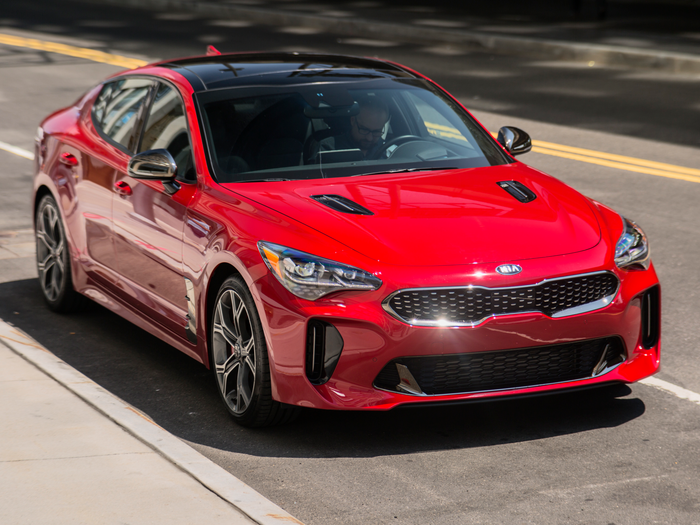
Korean automakers have come a long way since their inception, transitioning from budget-friendly alternatives to serious contenders in the global automotive market. Brands like Hyundai and Kia have garnered significant accolades for their vehicles’ quality, technology, and value. However, despite these advancements, challenges in perception linger. This article explores the factors influencing the recognition of Korean cars, the history of their reputation, and whether they will ultimately be viewed as “good” cars.
Historical Context
From Humble Beginnings
The history of Korean automaking began in the late 1960s. During the early stages, manufacturers primarily focused on producing affordable vehicles to meet domestic demand. Cars like the Hyundai Pony, launched in 1975, were simple and economical but often suffered from quality and reliability issues. These early models struggled to compete with more established brands from Japan and Europe, leading to a perception that Korean cars were inferior.
The Turning Point
The turning point for the Korean automotive industry began in the late 1990s and early 2000s. As South Korea’s economy began to stabilize and grow, manufacturers invested heavily in research and development. Hyundai, for example, partnered with international firms and adopted modern manufacturing techniques that dramatically improved product quality. The introduction of the Hyundai Sonata and Kia Sportage showcased significant improvements in design and engineering, and this shift caught the attention of both consumers and industry experts.
In 2004, Hyundai introduced its “Quality Assurance” program, which aimed to enhance customer satisfaction through rigorous testing and quality control. This initiative signified the brand’s commitment to producing reliable vehicles, which was crucial for changing public perception.
Current Landscape
Quality and Reliability Improvements
Today, Korean manufacturers consistently rank highly in reliability surveys. Organizations like J.D. Power and Consumer Reports have recognized Hyundai and Kia for their commitment to quality. In recent years, both brands have received high marks in various studies assessing vehicle dependability. For instance, J.D. Power’s Vehicle Dependability Study often ranks Hyundai and Kia among the top brands, indicating that they have successfully overcome many of the quality issues that once plagued them.
The extensive warranties offered by these brands, including Hyundai’s 10-year/100,000-mile powertrain warranty, further bolster consumer confidence. These warranties not only reflect the manufacturers’ belief in their vehicles but also provide a safety net for buyers, alleviating concerns over long-term reliability.
Performance and Innovation
Korean cars have made impressive strides in performance and innovation. The Hyundai Veloster N and Kia Stinger GT, for example, showcase the brands’ commitment to creating exciting driving experiences. The Veloster N, with its turbocharged engine and sport-tuned suspension, has received critical acclaim for its agility and responsiveness. Similarly, the Stinger GT combines luxury with performance, offering a twin-turbo V6 engine that delivers exhilarating acceleration.
Moreover, Korean manufacturers are at the forefront of technological advancements. Models like the Hyundai Ioniq 5 and Kia EV6 have garnered attention for their innovative electric powertrains and cutting-edge features. As the automotive industry shifts towards electrification, these vehicles position Korean brands as leaders in the burgeoning EV market.
Challenges in Perception
Overcoming Stereotypes
Despite the progress made, stereotypes persist. Many consumers still associate Korean cars with their historical shortcomings, viewing them as less desirable than Japanese or European models. This perception can be challenging to overcome, as brand reputation often takes years to solidify. For instance, while younger generations may be more open to Korean cars, older consumers may still harbor doubts based on outdated views.
Competition and Market Position
The automotive market is highly competitive, and brands must continuously innovate to remain relevant. Japanese automakers like Toyota and Honda have long-standing reputations for reliability and resale value, making it difficult for Korean brands to penetrate this market segment fully. Furthermore, European luxury brands, such as BMW and Mercedes-Benz, set high standards for performance and prestige, which Korean manufacturers are still working to challenge.
The sheer volume of options available to consumers can also dilute the perception of any single brand. With numerous automakers vying for attention, Korean brands must find ways to differentiate themselves and highlight their unique selling points.
Consumer Education
Many potential buyers may not be aware of the advancements in Korean automotive technology and design. Misconceptions can perpetuate negative views, making it essential for manufacturers to invest in consumer education and marketing strategies that highlight their improvements and successes. Innovative advertising campaigns that showcase positive customer experiences, awards, and testimonials can help reshape public perception.
Additionally, participating in auto shows, community events, and test drive opportunities can provide firsthand experiences that challenge outdated stereotypes. Engaging with consumers directly can foster brand loyalty and create advocates for Korean vehicles.
The Role of Media and Influencers
The media plays a crucial role in shaping public perception. While some automotive journalists have praised Korean vehicles for their quality and performance, others may still cling to stereotypes. Influencer culture in the automotive space has also become increasingly important; enthusiasts with large followings can sway opinions through social media channels. Positive reviews and endorsements from respected figures can significantly impact the perception of Korean cars among potential buyers.
The Road Ahead
Continuous Improvement
For Korean cars to gain broader recognition as “good” vehicles, manufacturers must continue their trajectory of improvement. This includes enhancing design aesthetics, performance metrics, and technological offerings. As they launch new models and innovate existing ones, they can further establish their reputation. Continued investments in research and development will be crucial for maintaining competitive advantages and keeping pace with evolving consumer preferences.
Engaging Enthusiasts
Cultivating a passionate community of car enthusiasts can also aid in changing perceptions. Engaging with consumers through events, social media, and automotive shows allows manufacturers to showcase their vehicles’ strengths and foster loyalty among drivers. Building a strong community around KDM (Korean Car Movement) can create brand ambassadors who share their positive experiences and help shift perceptions through word-of-mouth marketing.
Sustainability and Future Technologies
As the automotive industry shifts towards sustainability, Korean brands are well-positioned to lead in electric and hybrid vehicle markets. Their commitment to innovative technologies can attract environmentally conscious consumers and enhance their reputation as forward-thinking manufacturers. Emphasizing green initiatives and sustainable practices can resonate with a growing demographic of eco-conscious buyers.
Collaboration and Partnerships
Forming strategic partnerships with technology companies can also enhance innovation and strengthen the reputation of Korean automakers. Collaborations with tech giants in fields like artificial intelligence, battery technology, and autonomous driving can propel these brands into the forefront of automotive innovation. Such partnerships may not only improve vehicle offerings but also generate positive media coverage and consumer interest.
Conclusion
While Korean cars have made remarkable strides in quality, performance, and technology, challenges in perception remain. Overcoming historical stereotypes and competing in a saturated market requires continuous improvement and effective consumer engagement. With their current trajectory, it’s likely that Korean automakers will increasingly be recognized as makers of good cars. As they continue to innovate and adapt, the future looks promising, paving the way for a more favorable perception that could redefine the narrative around Korean automobiles.
In the long run, the journey toward recognition as a leader in the automotive world hinges not only on the vehicles themselves but also on how those vehicles are perceived by consumers. As the landscape of the automotive industry continues to evolve, Korean cars are poised to carve out a more respected and admired place in the hearts of drivers around the globe.
